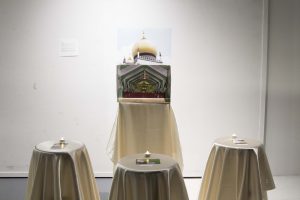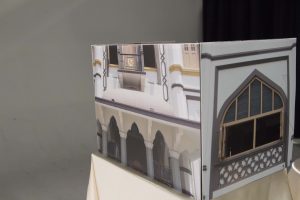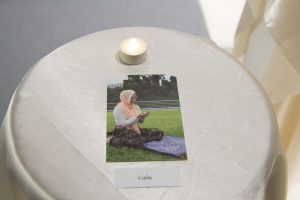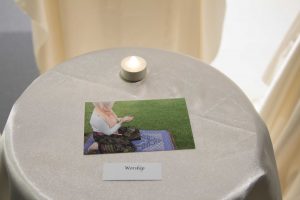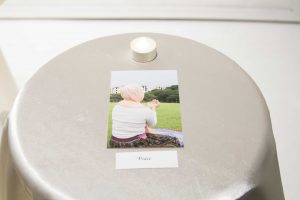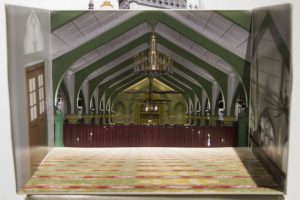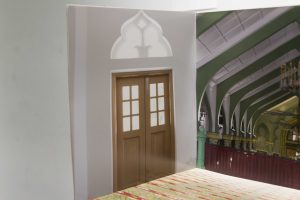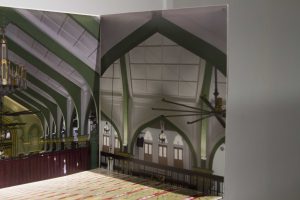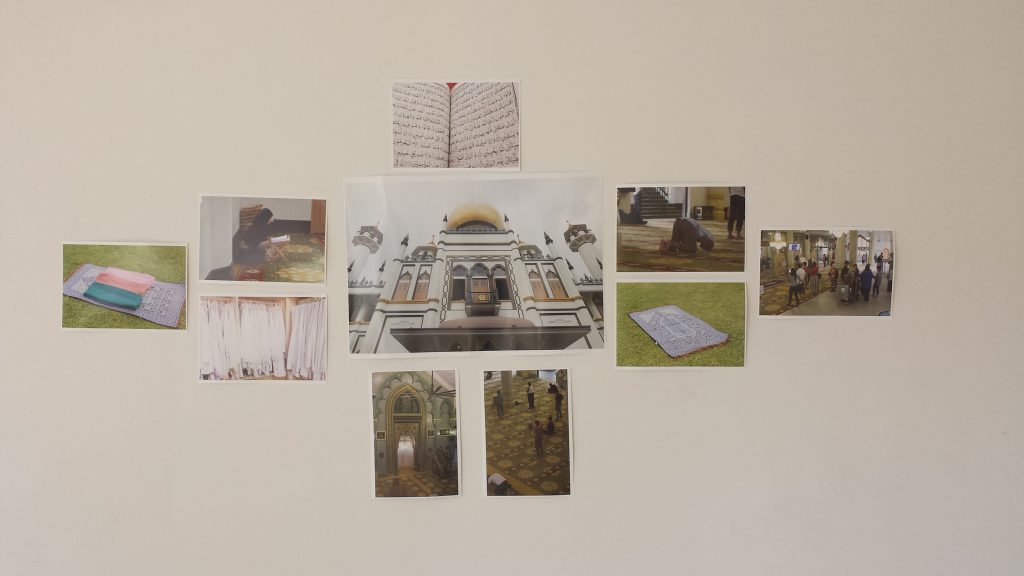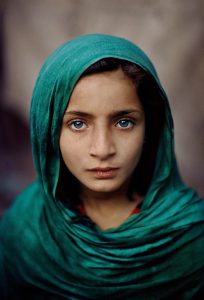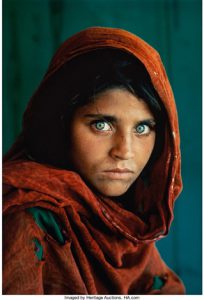Imogen Cunningham
Imogen Cunningham (1883-1976) was an American photographer who specialized in portraiture and still life, in the form of plants and flowers. She also captured nudes and industrial landscapes. Cunningham developed an interest in photography whilst studying Chemistry at the University of Washington. However her inspiration to become a photographer stemmed from Gertrude Käsebier’s image “Blessed Art Thou among Women” printed in 1899 (Lunsford, 2013). After achieving her degree, Cunningham went to train in Edward S. Curtis’s Studio to learn how to produce platinum prints and practice the techniques of taking studio portraiture (Lunsford, 2013).
Cunningham’s earliest prints were made in the tradition of pictorialism (Britannica, 2017). A form that is defined as an image with a painterly appearance (Lunsford, 2013). According to Britannica (2017), a pictorial image portrays the beauty of a subject matter, tonality, and composition rather than the documentation of reality.
Pictorialism dictated the world of photography during Cunningham’s education and the early years of her career. Pictorial images were created via composition and heavily retouching the final prints, otherwise known as a process that highlighted the hand executed techniques of the artist (Lunsford, 2013). Furthermore, practitioners made use of soft focus lenses or produced the image softly/slightly out of focus to create a paint effect.
Due to Cunningham’s strong scientific background in chemistry and experiences of printing for Edward S. Curtis’s studio, she was able to fully explore and experiment with pictorial image making. She had refined her ability of the platinum printing process to capture the tonal ranges she required for each image. She had also utilised another process called the gum-bichromate. This was often used by pictorialists as the photographic negatives could be heavily manipulated in order to provide a more painterly appearance to the image during processing.
Pictorialism is not the only form Cunningham had specialised in. By the late 1920s, her photography had completely moved onto modernism thus reducing her broad composition of nature and landscapes to their simplest forms; flowers and plants (Allen, 2012). According to Artsy (2017), modernism is a general term used to describe images with a sharp focus and studies shapes and forms. ‘Two Callas’ captured in 1929 is an example of one of Cunningham’s many portrayal of modernism as it is sharply focused on the petals; showing the lines and patterns of both flowers. The shape of the calla lilies are very unique and this is emphasised through the strong light focusing on the subject and the dark background. She used a 4*5 inch camera to capture most of her images as a large format camera produced extremely high quality photographs.
Although Imogen Cunningham was one of the most successful photographers, her choice to become a working woman was considered peculiar for her generation. One of the first images she captured was a nude self-portrait, where she is lying in a field, facing away from the camera. This required a lot courage for a female photographer to do this in the early twentieth century. However her courage, drive and talent were the reasons why she continued with photography and why her work caught worldwide attention.





Ansel Adams
Ansel Adams (1902-1984) was one of the many great black and white photographers (and environmentalists), whose work was highly recognised due to his ability to capture the beauty of landscapes. His most famous work was based in the Yosemite National Park, California; a place where he discovered his passion for photography. Adams had initially planned to become a pianist but decided to pursue photography (Hacking, 2015). As an environmentalists, he used his images of landscapes to inspire the society to protect America’s wild places.
At the beginning of Adams’ adventure in photography, he had used a Kodak Brownie Box, which was a gift from his father (Hacking, 2015). Once he became more experienced, he had started shooting mainly with a large format camera, specifically 5*4 and 8*10 inch (Hacking, 2015). He had used these to shoot many images of the Yosemite National Park due to the camera’s ability to produce extremely sharp photographs.
‘Oak Tree, Snowstorm’, is one of the many sharp and outstanding images taken by Adams. It was captured just after a snowstorm at the Yosemite National Park in 1948 with a 5*4 inch large format. The extreme snowstorm is heavily emphasised by the mountain behind the tree as it is nearly invisible. Adams had photographed this landscape using only natural light. He had placed the camera facing directly at the tree. It appears that he tilted his 5*4 large format slightly upwards so that he could focus on the tree. Although the image is bright and the snow appears to be very white and fresh (emphasising that Adams had taken this during the early daytime), the near invisible mountain behind provides the photograph a mysterious vibe. Adams’ had gained worldwide recognition due to his ability to produce high quality images and convey the beauty of landscapes. The ‘Oak Tree, Snowstorm’ is one of the most popular images from his Special Edition Prints, that when reproduced as a poster, almost one hundred thousand copies were sold (Stillman, 2012). However Adams’ only interest was to capture images of places and scenarios that attracted his eyes, and encourage the society to protect the natural environment. He once stated:
“In time of storm the clouds seek each other among the crags, and snow falls quietly, whitely, lavishly, filtering into the deepest recesses of the forest powdering tree and stone and piling high in the gorges and grottoes of the cliffs. As the clouds break a dazzling shining world appears, unearthly and quiet except for the mutter and boom of distant avalanched and the near thudding of fresh snow dropping from the pines.” (Bush, 2004:68)
I find this photograph to be most outstanding from the winter/snow collection. The fresh snow emphasises how magnificent nature really is. What I also admire is that all of Adams’ collection of images is that none of them were enhanced. He produced significant images via lighting and composition. The sharp focus of each of his images was another significant element Adams had shown in his photographs. It was another skill that made his work stand out and unique.
Comparison and ‘In the Style of’ technique
Ansel Adams and Imogen Cunningham both worked together when Adams had formed a photography unit, in 1932 called Group f/64. The group were given this name as f/64 was the smallest aperture setting of a large format camera (Britannica, 2017). This setting provides an extremely sharp focus to the subject of the image.
At the beginning of her career, Cunningham focused producing pictorialistic images. However she then diverted to modernism; by creating sharp photographs of flowers and plants. On the other hand, almost all of Adams work are sharply focused and he mainly captured landscape, specifically the Yosemite National Park, California.
As I am fond of flowers and plants, I decided to base my ‘In the Style of’ images on Imogen Cunningham’s work. I made multiple trips to Botanical Gardens and Gardens by the Bay and captured many photographs, using a film camera. I thoroughly enjoyed my trip to both sites as I was extremely fascinated coming across many different types of flowers and the vibrant colours. It was also interesting to be in the mind set of Cunningham; which flowers would her eyes be attracted to? How close would she be standing to the subject in order to capture a sharp image?
I processed all the photographs in the darkroom and in total I printed five: three of which are flowers and two are plants/leaves. My personal favourite is the row of white and lilac orchards. They were the most magnificent flowers I had come across at the Botanical Gardens as they were extremely vibrant and beautiful. I enjoyed experimenting with the different techniques when printing the images such as: dodging (to lighten some areas of the photographs) and using different contrast setting to achieve sharp images. I specifically dodged the light whilst printing the lilies as the stems were almost invisible due to poor lighting. Using this technique, I was able to print a whole image of the lilies, conveying the beauty of the flower, just like Cunningham did in her work.
As an aspiring photographer, I respect both Ansel Adams and Imogen Cunningham’s capabilities of producing high quality photograph and being able to find the locations and subjects in order to achieve this. During the mid 1970s, Adams’ assistant; Adam Ross stated:
“Ansel continually amazed me in finding strong images in places I would have thought were barren of potential. We might be driving down a country back-road of no apparent interest and he would suddenly ask me to slow down and pull over. In the midst of rural chaos he would find order in an old cattle-run, an arrangement of some rocks, grasses and clouds, or weathered boards on the side of a barn. It had been years since he had been out on such an assignment, but it was emphatically clear that he had not lost his touch!” (Stillman, 2012:223)
I aspire to become a well respected photographer like Ansel Adams and Imogen Cunningham in the future, and produce a portfolio of high quality images that myself and others will admire.
References:
Allen, J M (2012) Imogen Cunningham – From Vision to Reality: A Transition from Pictorialism to Modernism. New York: D.A.P/Distributed Art Publishers Inc.
Artsy (2017) Modern Photography [Online] Available at: https://www.artsy.net/gene/modern-photography [Accessed at: 9th November, 2017]
Britannica (2017) Group f.64 [Online] Available at: https://www.britannica.com/art/Group-f64 [Accessed at: 10th November, 2017]
Britannica (2017) Imogen Cunningham [Online] Available at: https://www.britannica.com/biography/Imogen-Cunningham [Accessed at: 8th November, 2017].
Britannica (2017) Pictorialism [Online] Available at: https://www.britannica.com/topic/Pictorialism [Accessed at: 9th November, 2017].
Bush, J (ed). (2004) Ansel Adams|Trees. New York: Time Warner Book Group.
Hacking, J (ed). (2015) Lives of – The Great Photographers. London: Thames & Hudson Ltd.
Lunsford, C (2012) Imogen Cunningham – Imogen Cunningham, Modernist and Visionary. New York: D.A.P/Distributed Art Publishers Inc.
Stillman, A G (ed). (2012) Looking at Ansel Adams. The Photographs and the Man. New York: Little, Brown and Company.

